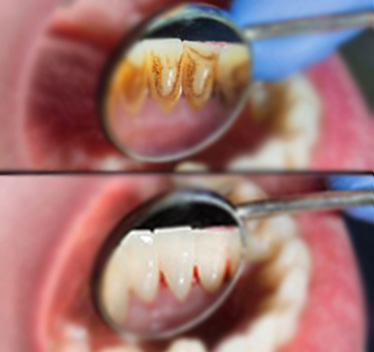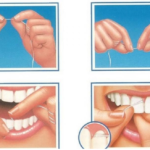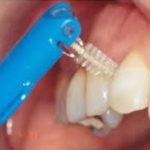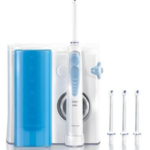ental plaque is a sticky and whitish patina that forms on the surfaces of our teeth, composed of food residues and bacteria (mostly streptococcus mutans, fusobacteria and actinobacteria) that aggregate to the dental enamel, multiplying and forming, in conditions of humidity , a bacterial biofilm.
Some bacterial plaque compounds are acidic and therefore tend to act on the outermost and protective layer of the tooth, i.e. the enamel, softening it and making it accessible to certain bacteria, which by forming caries can thus easily reach the innermost layers of the tooth, dentine and pulp.
Dental plaque tends to accumulate especially between the interdental spaces, at the edges of the gum, on the chewing occlusal surfaces and at any point there are irregularities.
The bacterial plaque having a soft consistency must be eliminated daily with the correct home oral hygiene maneuvers.
If instead the bacterial plaque is not eliminated and remains in some areas of the tooth for more than 36/48 hours, our saliva calcifies it into tartar.
Tartar is therefore a very hard compound that can no longer be eliminated simply with home oral hygiene, but requires the intervention of the Dental Hygienist, who will eliminate it with one or more sessions of professional oral hygiene.
A lot of attention must be paid to tartar because the metabolism of the bacteria that compose it and the fact that it cannot be eliminated in a simple way, can predispose the patient to the onset of periodontal disease.

Follow our protocols
IN-DEPTH INFORMATION ON INTERDENTAL AID
Being able to clean interdental spaces is not always easy. If you are accustomed to this habit, you cannot do without it and above all, you can prevent tooth decay and periodontal diseases. For this reason, all the staff recommend and instruct to use some essential aids.
Here are the top 3 … the most traditional perhaps … but do you really know how to use them correctly?

INTERDENTAL THREAD: take a piece of thread of about 30 cm and roll it up on the middle finger of both hands, leaving the index finger and thumb free so that they can guide the thread inside the mouth. Pass the thread between all the interdental spaces by descending under the gum without fear and embracing both sides of the tooth.
Interdental spaces are not always even and we often find ourselves cleaning crowns or bridges where the interdental thread does not go through. In this case we can use a pipe cleaner.

PIPE CLEANER: place the brush on the gum at the same level as the interdental space, incline it slightly diagonally to allow it go through more easily and apply a horizontal movement “back and forth” from the outside to the inside of the mouth three times and if possible do the same from the inside to the outside of the dental arch. In addition to the mechanical action, the brush adds gingival stimulation thanks to the presence of bristles that can massage and tone the area they touch.

WATERJET: Among the many other interdental aids that we know, Waterjet can be the solution for lazy patients.
Direct the water jet towards the most difficult interdental spaces for a few seconds. The single water jet gently removes food residue from hard-to-reach areas, while the multiple water jet gently stimulates and massages the gums. Since this instrument has a reservoir where you can put water, on the advice of your dentist or hygienist you can add mouthwash to the jet for pleasant freshness, or even medical mouthwash to disinfect more inflamed areas.
CHOOSE OUR DENTAL HYGIENE!
Schedule a professional dental cleaning before it’s too late.

